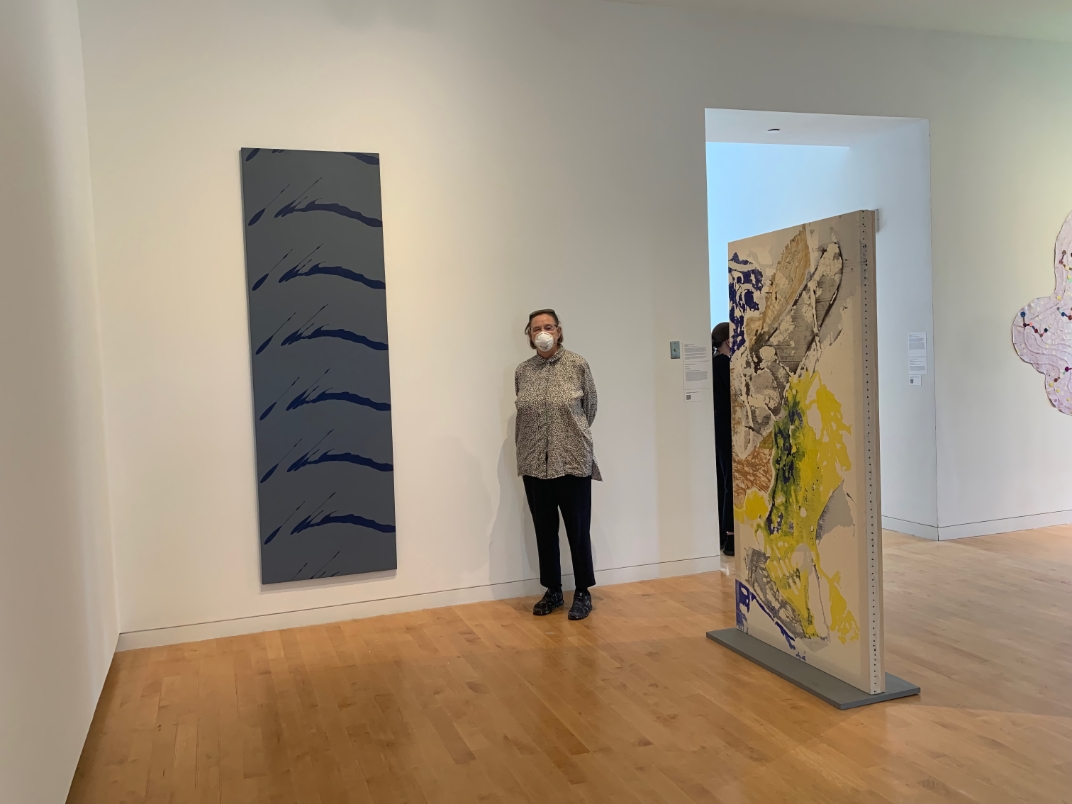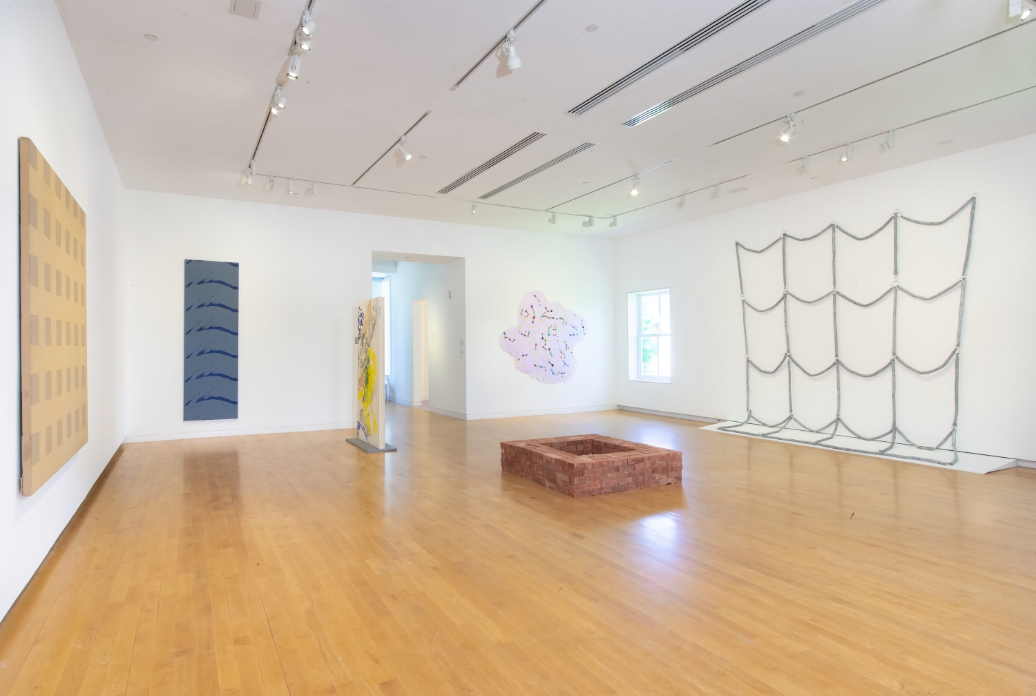Artist’s Statement/Canvas
The two-sided paintings, which I have been making since 2003, have evolved because I have continued to develop masked areas covered with gel medium. These areas block watery paint passing through the canvas. A painting like And the Sun Went Down, (see the image below), is very different on the back of the painting than the front, a surface that looks, on first glance, extremely gestural, but never could have been made directly, because all the lines and marks appear simultaneously. The front of And the Sun Went Down is an image that is constructed by successive passes with wet paint over the back of the stretched canvas.
In the late 1960s, in New York City, if one wanted a roll of canvas, you could visit a sail maker in lower Manhattan, where wide expanses of canvas were displayed on huge rolls. Most of that canvas was woven in the United States. In 2024, most art stores have a very limited choice of canvas on display. I order rolls online. A lot of it is woven in India or China, and the surface is treated in different ways which varies the color of the material. Each unique piece of canvas is the primary maker my stain paintings, because every stretched expanse absorbs buckets of water and fluid acrylic in a different way, and also, all the colors, often intermingling, pass through different pieces of canvas, differently. The painting’s final image also depends on the weather and how quickly the paint dries.
Dona Nelson, February 22, 2024
The Bone and Muscle: A Conversation with Dona Nelson, June 2025
Read Article
Hamill Lecture, Boston University School of Visual Arts, 2021
Watch Video
In making my big two sided abstract paintings, the stretcher is the tool.


52 Women Artists, The Aldrich Museum of Art, Summer 2022, an exhibition revisiting 26 Contemporary Women Artists, organized by Lucy Lippard in 1971


